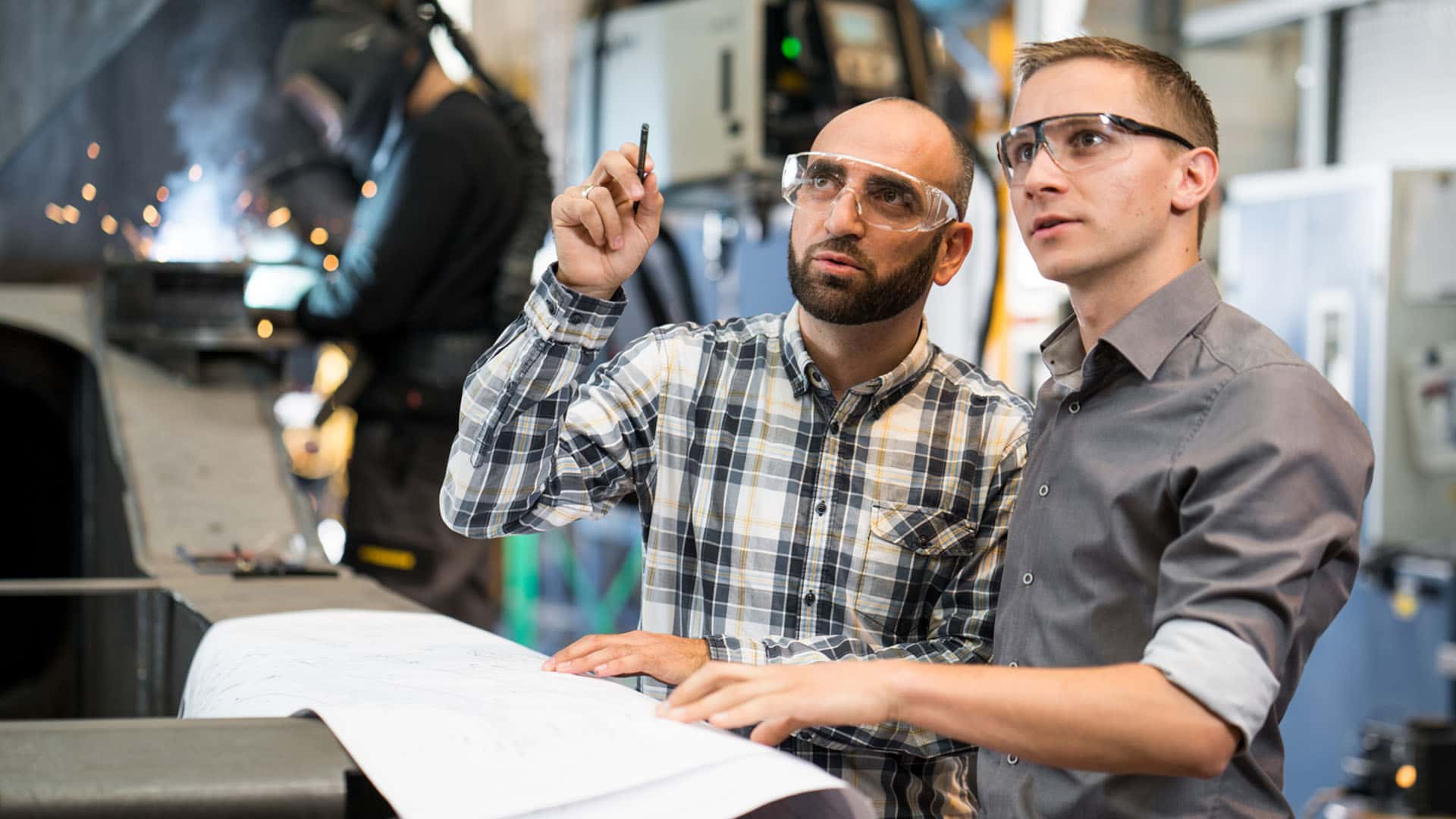 Mobile and crawler cranes
Mobile and crawler cranes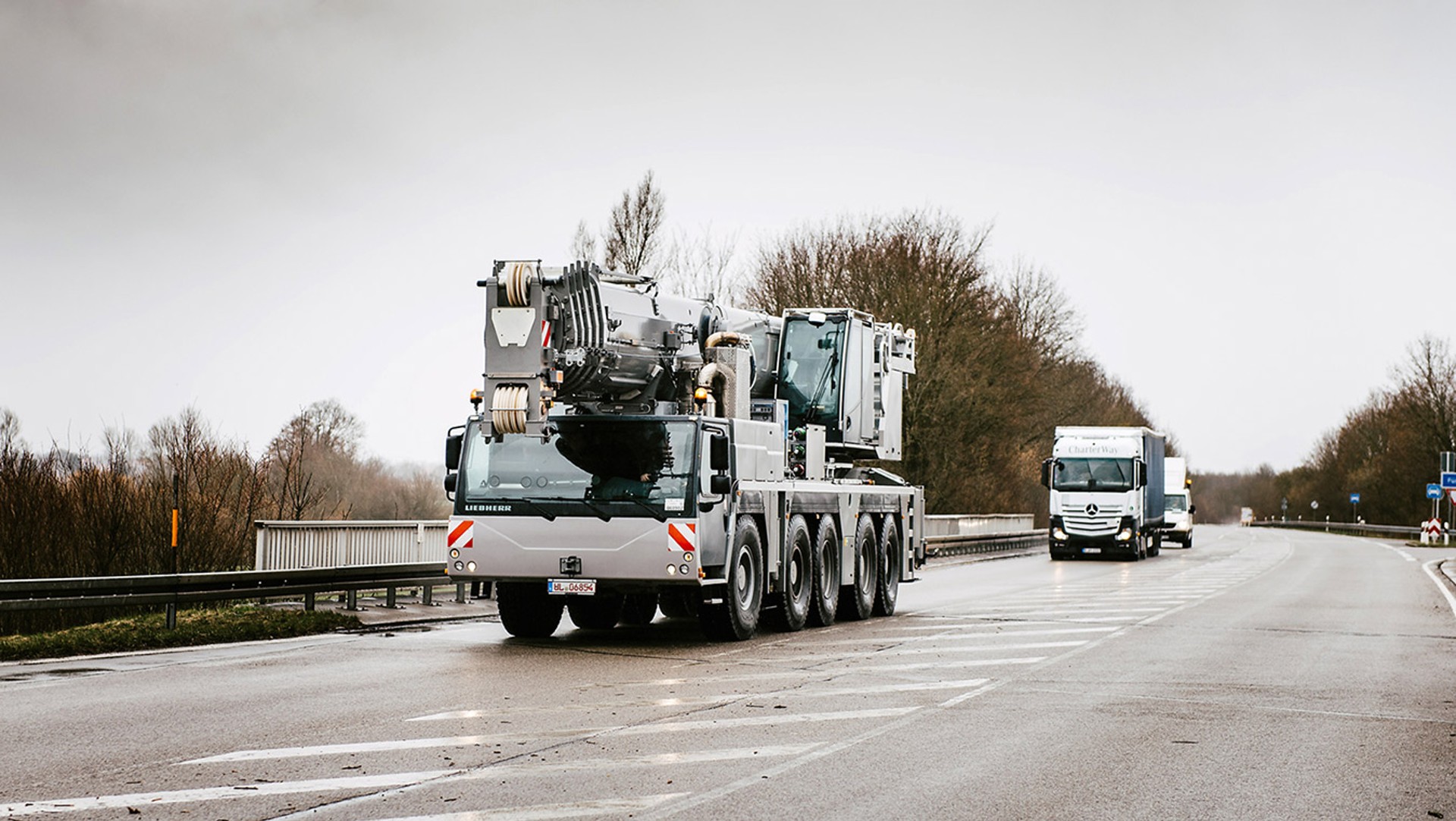
14 minutes | magazine 02/2019
Emissions tests in real-world driving
A series of tests conducted with TÜV NORD and engineering partner IAV recently proved that even large vehicles, such as our 5-axle LTM 1160-5.2 with a road weight of 60 tonnes meet the high onroad requirements of the Euro VI c standard.
Mobile crane compared to a modern truck
Dr. Ulrich Hamme, Technical Director at Liebherr in Ehingen, Daniel Rössner, Development Engineer at Liebherr, Daniel Lüderitz from IAV and Dr. Martin Goschütz from TÜV NORD produced this report on the so-called PEMS tests in Ehingen. PEMS stands for Portable Emission Measurement System.
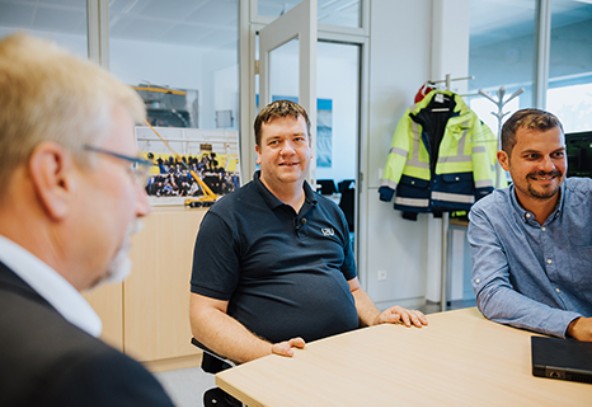
Dr. Ulrich Hamme (Liebherr), Daniel Lüderitz (IAV) and Daniel Rössner (Liebherr) planning the PEMS test series
The testers from TÜV NORD and the engineering partner IAV were recently in Ehingen to carry out a comprehensive series of tests. Why were they there?
Dr. Hamme: Mobile cranes are used in very limited quantities around the world compared to trucks and only cover around 10,000 kilometres per vehicle per year. Despite the very low levels of pollution they cause due to this relatively low use, modern, sophisticated exhaust emissions technology is used to clean the emissions. We conducted this PEMS test to demonstrate the that we do not have anything to hide compared to conventional long distance trucks. We wanted to show the following: Our cranes are clean. Our environment is not just protected safely and reliably in theory but also in practice.
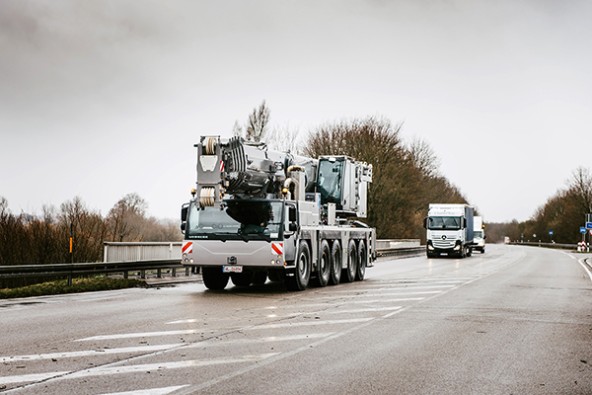
The convoy of the mobile crane and long distance truck on the route between Ulm and Ehingen.
The emissions scandal in the car industry has seen a great deal of criticism directed at the tests. How can you guarantee that this PEMS test will tell the whole truth and nothing but the truth?
Daniel Lüderitz: Let’s get the most important thing out of the way first: These PEMS tests are measurements taken during real-world driving. In other words, we measure the exhaust emissions in real, everyday traffic conditions, not on a test bed. The measurements are taken in normal traffic whilst driving on defined routes. The routes must contain a certain proportion of urban, rural and motorway sections, as defined by the legislator. For the Euro VI c measurement, which we are interested in, this means 20 percent urban roads, 25 percent rural roads and 55 percent driving on motorways.
Dr. Goschütz: The route was defined on the basis of measurements carried out in advance by Liebherr. We rechecked the route and carried out a test drive on it. The result was a route around Ehingen and Ulm covering a distance of 105 kilometres. This included around 15 kilometres in the town, 25 kilometres cross-country and 75 kilometres on the motorway. At TÜV NORD, we carried out a comparison measurement between a LTM 1160-5.2 mobile crane with offroad emissions stage V and a Mercedes Actros 1842 long distance truck which complies with the onroad Euro VI c standard. We ensure that the measurement equipment is calibrated, the measurements are carried out correctly and we document the results in an independent report.
Daniel Rössner: We installed the PEMS system together on the crane. It essentially comprises equipment to measure the exhaust emissions at the actual tailpipe. We deliberately brought our colleagues from IAV on board to take the measurements on the truck which was driven over the same route as the crane to provide a basis for comparison. They have a great deal of experience with measuring long distance trucks and were therefore the perfect partners.
That sounds like a lot of work for an in-house project. Is it really worth it?
Dr. Hamme: We are convinced that it is. We have been conducting research for over 20 years and a significant part of our development budget is spent on reducing emissions. During this time we have managed to reduce nitrogen oxides and particulates, in other words fine dust, in several stages by around 97 percent. Before our fleet was converted to emissions stage V, we started a field test lasting several months with crane hire company ESB based in Biberach to monitor and improve the diesel particulate filter and urea dosage system in real-world conditions during use by customers. Now we can prove with these independent measurements that our cranes are truly clean. The results of these measurements are a pioneering milestone in the development of gearboxes and engines for our mobile cranes.
Daniel Rössner: We do not believe that there will be an alternative drive technology in the near future, which can replace the diesel engine in full. The complex requirements for a mobile crane, in other words, the combination of road travel and site operations, quite simply mean that it is impossible. With this in mind, we both wanted and felt an obligation to ensure that the engines we use in our mobile cranes are state of the art in technological terms. Modern mobile cranes with the single-engine concept only have a single engine for both road travel and site operations. All diesel engines built in 2019 onwards, which are installed in mobile cranes and licensed in EU countries, Switzerland or Norway, must satisfy the Euro V emissions standard. The requirements are similar to those for the onroad Euro VI c standard. That is why this comparison measurement was essential for us.

This video is provided by Google*. When you load this video, your data, including your IP address, is transmitted to Google, and may be stored and processed by Google, also for its own purposes, outside the EU or the EEA and thus in a third country, in particular in the USA**. We have no influence on further data processing by Google.
By clicking on “ACCEPT”, you consent to the data transmission to Google for this video pursuant to Art. 6 para. 1 point a GDPR. If you do not want to consent to each YouTube video individually in the future and want to be able to load them without this blocker, you can also select “Always accept YouTube videos” and thus also consent to the respectively associated data transmissions to Google for all other YouTube videos that you will access on our website in the future.
You can withdraw given consents at any time with effect for the future and thus prevent the further transmission of your data by deselecting the respective service under “Miscellaneous services (optional)” in the settings (later also accessible via the “Privacy Settings” in the footer of our website).
For further information, please refer to our Data Protection Declaration and the Google Privacy Policy.*Google Ireland Limited, Gordon House, Barrow Street, Dublin 4, Ireland; parent company: Google LLC, 1600 Amphitheatre Parkway, Mountain View, CA 94043, USA** Note: The data transfer to the USA associated with the data transmission to Google takes place on the basis of the European Commission’s adequacy decision of 10 July 2023 (EU-U.S. Data Privacy Framework).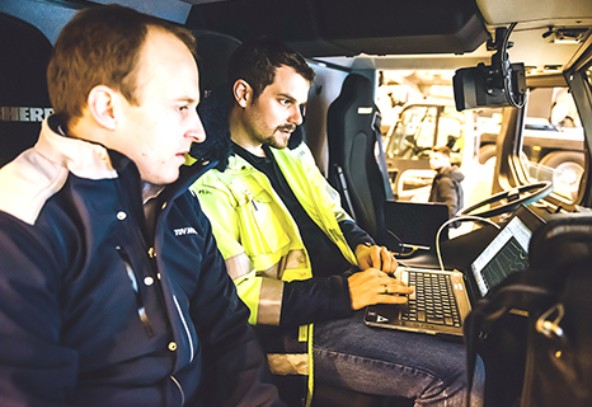
Dr. Martin Goschütz (TÜV NORD) and Daniel Rössner installing the equipment on the LTM.
What factors were particularly important during the tests, which were difficult to assess and what did you have to change about the process once it had started?
Daniel Lüderitz: A test is never straightforward. We drove in convoy. The mobile crane was in front since it was the main vehicle due to its limited speed. It was followed by the truck, which in turn was followed by an escort vehicle. If they ran into a traffic jam, the time for the various route sections would no longer be correct, rendering the whole measurement invalid. If that happened, we had to abort the measurement and start all over again. We also had to ensure that the results were clearly comparable. That meant that we had to complete two different comparisons. In the first comparison, the truck was tested as specified by the regulations of Euro VI c. This test requires the truck to carry a load between 50 and 60 percent of the maximum payload. The second test requires the 40-tonne truck to carry its maximum payload so as to be more comparable with the mobile crane which has a 12 t axle load, which corresponds to a total weight of 60 t. And what's more, the recording process starts when the engines of both vehicles are cold and continue for the entire duration of the measurement.
Daniel Rössner: Fortunately, we had to change very little during the tests. In fact, the planning we conducted in advance proved to have been very valuable in this respect. And we were also fairly lucky as we did not encounter any unforeseeable events such as traffic jams or accidents en route.
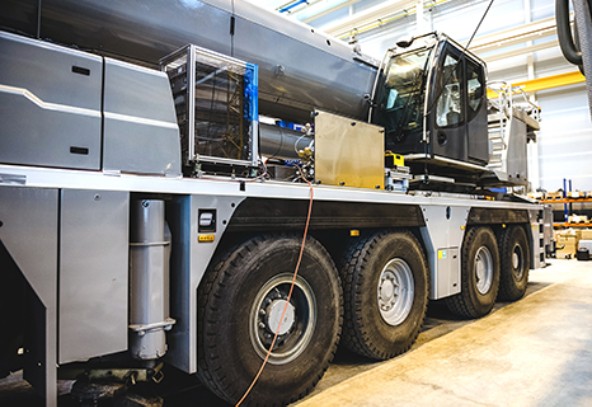
So now we come to the exciting bit – what were the actual test results the end?
Daniel Lüderitz: Our measurements show that the mobile crane is in the same sort of range as the truck in terms of nitrogen oxide emissions. In terms of carbon monoxide, they also produced similar measurements and for hydrocarbons, you can see that the LTM is actually significantly lower than the comparison truck.
Dr. Goschütz: The mobile measurements were designed to provide the best possible comparison to the Euro VI c requirements and all the measurements were within the limit values.
Dr. Hamme: Now that we have completed the project, we are delighted that we conducted these comprehensive PEMS tests on our cranes with TÜV NORD and IAV, comparing them to the modern emissions technology for trucks. We were able to demonstrate that our cranes comply with all the required limit values specified by Euro VI c for commercial vehicles. Our cranes really have nothing to fear from a comparison with a fully laden long distance truck, thousands of which can be seen on every road in the world. Our cranes are clean.

Dr. Ulrich Hamme, Technical Director
In other words, your PEMS tests demonstrated that in practice Liebherr cranes meet all the emissions limit values set out in the onroad Euro VI c standard for trucks. Even though the vehicles cannot be compared in terms of power, distance travelled and quantities. So what was the technical breakthrough that enabled you to achieve this massive reduction in emissions?
Dr. Hamme: We have always tried to set pioneering, forward-thinking standards in terms of cleanliness and environmental protection with our latest Liebherr engines and our modern mobile cranes. The main focus, of course, is on the engines themselves. They are manufactured in Switzerland at our sister plant in Bulle – whilst we conduct the development work jointly. And that is the main point. There is probably no other manufacturer in the world producing engines on such a small scale that can claim to have the same level of influence over the development work. And that applies to both the hardware and the software.
I would like to express my sincere thanks to everybody concerned for this achievement – in Ehingen, at the Liebherr-Components Division plants and also our partners. The results of these tests show that we are moving in the right direction. And they provide some impressive evidence of this.
Terms
Emissions stage V:
Emissions legislation for mobile machines and equipment in the EU takes the form of Regulation (EU) 2016/1628. This regulation contains engine categories, emissions limits, introduction dates, durability requirements and a series of administrative guidelines for the current EU emissions stage V for mobile machines and equipment not designed for road traffic.
EU standard VI c:
Euro VI c is the limit value level for truck exhaust emissions in a directive issued by the European Union based on the European Parliament’s regulations for commercial vehicles. One of the main components of the directive is that measurements must be taken whilst the vehicle is driving in real-world conditions.
PEMS test:
The PEMS (portable emission measurement system) equipment is a mobile emissions measuring device for real-world driving. The in-service conformity method (emissions during use) is also used to measure emissions using PEMS on public roads. To conduct the ISC test, vehicles are fitted with the PEMS device for mobile emissions measurement and tested in real road traffic situations to find the limit values of nitrogen oxide (NOx), carbon monoxide (CO) and hydrocarbons (HC).
This article was published in the UpLoad magazine 02 | 2019.

